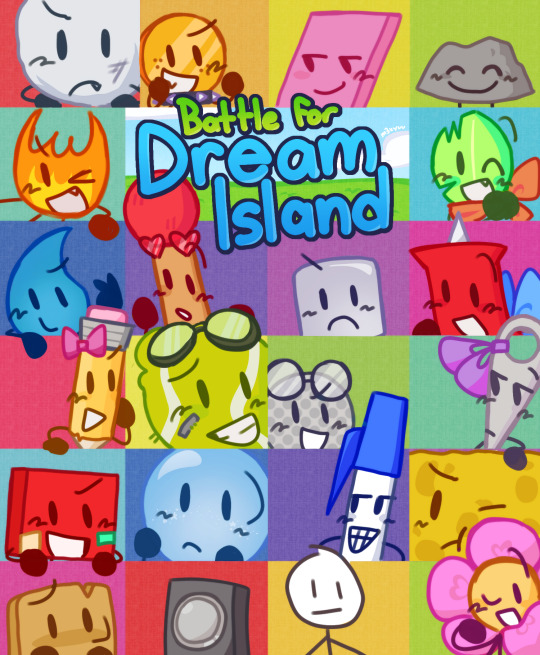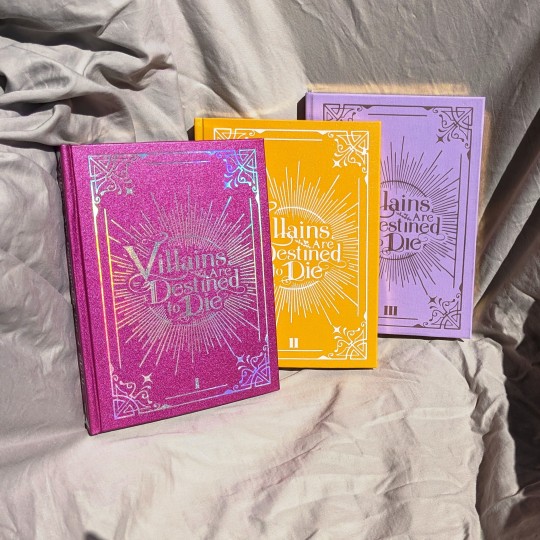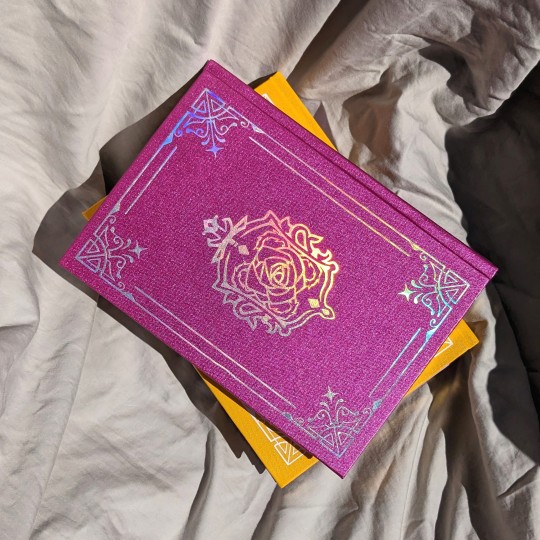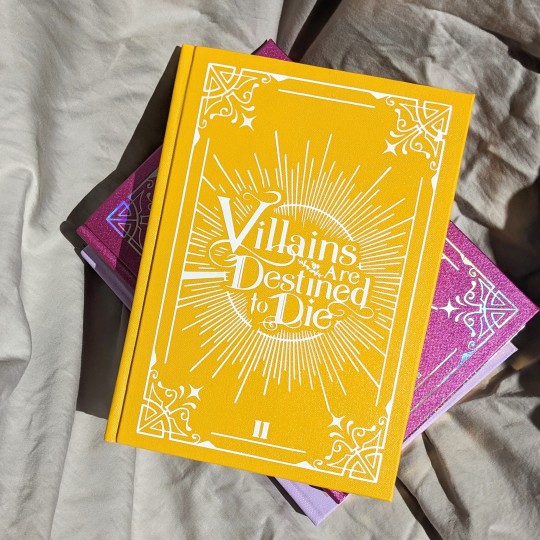#redraw of the official blanket design
Explore tagged Tumblr posts
Text

happy birthday BFDI! 🎂
#redraw of the official blanket design#ik im a day late but technically i finished this on the 1st...#bfdi#bfb#tpot#battle for dream island#bfdi snowball#bfdi coiny#bfdi eraser#bfdi rocky#bfdi firey#bfdi leafy#bfdi teardrop#bfdi match#bfdi ice cube#bfdi pin#bfdi pencil#bfdi tennis ball#bfdi golfball#bfdi needle#bfdi blocky#bfdi bubble#bfdi pen#bfdi spongy#bfdi woody#bfdi announcer#bfdi david#bfdi flower#gasping for air after putting all those chara tags omfg
215 notes
·
View notes
Text





The sun is out, quickly gotta grab a blanket and do a photoshoot of my latest rebind.
Villains Are Destined to Die Manwha rebind, volume 1 - 3!
I decided to keep the original logo design because I like it a lot. The backside features the Eckhart family crest, which I found on an official merch product in Korea. The quality was bad though so I had to redraw it.
I did not want to design 3 different covers for each volume (especially since the series is still on going and more will be released), so I simply changed the volume number
#book binding#bookbinding#bookbinders#rebinding#villains are destined to die#death is the only ending for a villain#penelope eckhart#vadtd#eggfriedpenguin
751 notes
·
View notes
Note
With a lot of the merch and anime and that mobile game and stuff shipping Sorey and Alisha, i try SO HARD to be understanding, like theyre a different culture they dont know how fucked it is to ship a gay guy with a girl...But damn they make it hard.
I thought about not answering this ask at all because of how touchy this subject is. But honestly, I’m personally not a huge fan of this particular attitude, especially when the overall picture is actually the opposite, with a few minor exceptions. Asteria using Sorey as Alisha’s standard 6* awakening unit partner is actually an exception and not the rule to how Bamco has been doing things.**
**While Bamco is hardly a company that needs stanning, when the evidence I’m seeing is the complete opposite, I do feel the need to speak up.
Everything behind a Read More. Possibly unpopular opinions abound, anon hate in the ask box = sorry shy followers, anon is going off.
Honestly, the only place where I’ve even seen anything official that could be seen as “Ship Tease” for them is Asteria’s awakening partner system. Bamco knows Sorey and Mikleo’s character merch sells well, whether it’s together or separately, and they have not let up on that particular merch train ever since Zestiria released. (see: Last Tales of Festival popularity poll, where Mikleo came in first, and Sorey came in sixth.) There is a lot of official merch out there that is all very hint hint nudge nudge about Sorey/Mikleo, the short list being: Comiket blankets/clear files (has Mikleo very clearly “casually” lounging on Sorey’s bed) and their combined merch set, Dream Cushion Covers (Celestial Record lines up on both sides of both pillows), Water Armatus-themed watch (comes with a piece of bonus artwork with Sorey in Water Armatus turning back to look into Mikleo’s eyes), Water Armatus/Mikleo rubber strap charm that is a pack in with one of the versions of the S2 BD box set, the rubber strap charm featuring a chibi version of Sorey and Mikleo standing at the park in Lastonbell (I believe this one is from Wachatto), the literally named Sorey x Mikleo phone case (Sorey’s Shepherd cloak pattern on top, Mikleo’s tunic pattern on the bottom, with the side designed to look like the spine of a book), the soon to be released Water Armatus (specified as Sorey and Mikleo) perfume for TalesFes 2018, just to name a few. I personally can’t think of anything merch-wise that features Sorey and Alisha exclusively the same way Sorey and Mikleo merch is.
As far as the mobile games go, there’s Mikleo’s Leviathan Edge Mirrage Arte in Rays, in which the artwork is named “Two Who Dream As One”, with the picture being an official redraw of their wrist bump inside Galahad Ruins, the entirety of the Sweetopia event, the bit in the Summer Relay Medley event (which introduced Alisha) where Mikleo mentions he gave Sorey special training so he could disperse whirlpools with Lion’s Howl. Plus, while some of the sub event skits go with the canon ships, Alisha’s is a comedic one focused on how she thinks Dymlos (Stahn’s Swordian, an intelligent artifact sword) is a Swordian Seraph thanks to Edna’s trolling. The entirety of Sorey’s chapter in Story 3 of Asteria (I tried to fumble my way reading it, but as far as I recall, Sorey and Mikleo were together for the entirety of it) plus how prominently Sorey and Mikleo and the Water Armatus is featured within the Story 3 OP animation. Oh, and there’s the often mentioned point in Story 3 where Zelos asks if Sorey and Mikleo are out on a date and while they’re both flustered, neither of them deny it either. And while Link has a story that focuses mostly on the original characters, the summer event that featured swimsuit Sorey, Mikleo, and Alisha had a very heavy Sorey/Mikleo slant to the writing as well from what I recall.
And while the anime didn’t have nearly enough direct involvement from Bamco, it did give us the following, just off the top of my head: a montage set to Shared Determination/Determination of the Two (take your pick on translation) of Sorey and Mikleo growing up together, Sorey and Mikleo touching each other damned near every episode, an indirect kiss via sharing pumpkin mousse, and of course, the spinny hug in the conclusion. I’m sure there’s more, but I’ve chosen to forget the the anime as much as I can. Sure there may have been some hinting, but the reunion at the end? Just like the game, the only epilogue reunion we see is Sorey and Epileo. Enough said.
What I’m trying to say is - Bamco’s merch leans more heavily towards Sorey/Mikleo than any other character pair up, and this extends to the most part to the mobile games as well. While Alisha appears in the merch as well, it’s nowhere near the extent that Sorey and Mikleo get included, and there is no merchandise that features her and Sorey exclusively. Meanwhile, there have been no less than three different official Sorey and Mikleo rubber strap charms that feature them both together.
So ask yourself this - with all of this in mind, does it really count as Bamco “shipping a gay guy with a girl”? And also, as another point, is it actually possible for “someone who identifies as a homosexual male to be friends with someone who identifies as (any sexuality) female”?
#soymilkheaven answers a reply#fandom negativity#i will not answer follow up questions to this question whether it's on/off anon/over pm/twitter/etc#this is about as much discourse as I have patience for#pikabelle
19 notes
·
View notes
Text
Minimalist Blankets Turn Tiny Details From Money Into Tapestries
Throughout history, civilizations and cultures have used textiles—rugs and blankets—as currency. One particular culture that did so was the Zapotecs, a pre-Columbian indigenous civilization that dates back around 2,500 years.
The Zapotecs's use of textiles forms the basis of a new project by Austin-based designer Nick Hiller, which taps into this history of textiles as currency by creating a series of jacquard loomed throw blankets inspired by contemporary banknotes from around the world. Called Currency Blankets, they include the US $100, Hong Kong $10, Uganda 100 Shilling, Kyrgyzstan 5 Som, Argentina 10 peso, Australia $50, Romania 2000 Lei, and Switzerland 10 franc. "Most currency is so beautiful, and yet so ubiquitous that it's easily overlooked," Hiller notes.
Benjamin Blanket. USA. Image courtesy of Nick Hiller
The project was launched along with Hiller reopening an old family store, Hiller Dry Goods, which recently launched online. The store, originally opened in Detroit in 1904, goes back four generations in his family but ended when his father was forced to sell due to the 2008 recession.
"My father used to sell handwoven Zapotec rugs from Oaxaca and Pendleton [textile manufacturing company] blankets in my family's old store," Hiller tells Creators. "Growing up, I was always fascinated with the history of rugs and blankets having been used as a form of currency."
Hiller notes that via their connection with Oaxaca, he was able to learn about the Zapotecs's highly valued textiles, and how it allowed them a degree of self-governance under the Aztecs and saved them from being eradicated by Spanish conquistadors, too. "That really stuck with me," Hiller says.
Harbor Blanket. Hong Kong. Image courtesy of Nick Hiller
The designer decided that when reopening the store, he would also create a range of rugs and blankets inspired by the millennia-old tradition of using them as currency. "A little digging led to so many other examples," notes Hiller. "In West Africa, many cultures, including the Wolof in Gambia, used 'cloth money' in standardized strips that functioned as individual units of value; in medieval Iceland, a woolen fabric called wadmal (Old Norse for 'legal cloth') was the official currency for over 600 years; even the Silk Road, civilization's first global trade network, was named after the route's dominant form of currency."
Edith Blanket. Australia. Image courtesy of Nick Hiller
Our contemporary currency, banknotes and coins, was also of huge interest to Hiller not just for its designs, but also for how they reflect upon contemporary culture and represent a nation's collective mindset. Because, the designer explains, you can learn as much about a country from what's excluded on its notes as what's included.
"I think the best example is the US dollar," says Hiller. "We've always been a diverse nation, and yet if someone from another planet tried to make assumptions about the US citizenry based on our currency, they would be led to believe that we are a homogenous society of old white men and bald eagles. This belies the brand image we try to project to the rest of the world—equality and the melting pot. But there's no melting pot on the money. In fact, unlike many developed nations (and some developing ones) we've never had a woman on one of our banknotes. I would argue that this profound contradiction is at the heart of the American psyche. And it's all there on the money!"
Solar Blanket. Romania. Image courtesy of Nick Hiller
To find designs he wants to use, Hiller looks at banknotes from across the globe, and when he sees a pattern or shape he likes, he gets a high-resolution scan so he can take a closer look. As for what aspects he uses, the designer says he likes to focus on the more "core design elements and motifs," ignoring a lot of the ornamental, committee-designed excess. This means he might just take a small detail, perhaps insignificant to most, and use that as the basis for a piece.
"One of the more interesting things that I've noticed is that there are certain motifs—small, randomly dispersed rings, a certain honeycomb pattern—that you see over and over. I suspect De La Rue (the printer of more than 150 national currencies) has something to do with this."
Hiller then redraws the parts he wants to use, incorporating them into his designs using Illustrator. The blankets are then woven on an industrial CNC jacquard loom to get the right amount of detail. This is done by weavers who use CAD software to create the weave pattern, and who Hiller says are "one of the last textile manufacturers in western North Carolina... Their ancestors were some of the first weavers in the American colonies."
The results are finely detailed blankets that explore and play with both the abstract, unsung design on the banknotes, the characters who appear on them, and the concept and history of currency itself.
United Blanket, Sierra Leone. Image courtesy of Nick Hiller
"These days when we refer to currency, we're referring to fiat currency, which is purely conceptual," says Hiller. "Banknotes and coins have no intrinsic value (a penny costs more to produce than it's worth in copper) and yet are accepted the world over. That's incredible in and of itself. This also happens to be an important time in the history of currency. With the growing acceptance of credit cards and digital cryptocurrencies, we might be witnessing the obsolescence of physical banknotes and coinage. Just this year, the People's Bank of China announced its intention to become the first major central bank to issue its own cryptocurrency. Last year Prime Minister Modi demonetized 86% of India's banknotes in an attempt to combat money laundering and corruption. Collectors must be pretty alarmed. What I find compelling about the currency blankets concept is that by converting these 'valueless' modern currencies back into an ancient form, they regain a functional value—the Marxist 'use value'—that they haven't had in centuries."
Cowrie Blanket. Uganda. Image courtesy of Nick Hiller
You can see more and purchase Nick Hiller's Currency Blankets at the Hiller Dry Goods website.
Related:
Panning for Gold to Make Money and Art
We Spoke To The Designers Of Norway's New Pixel Art Currency
Monopoly Money Sculptures Combine Consumerism with Creativity
from creators http://ift.tt/2v129CY via IFTTT
0 notes